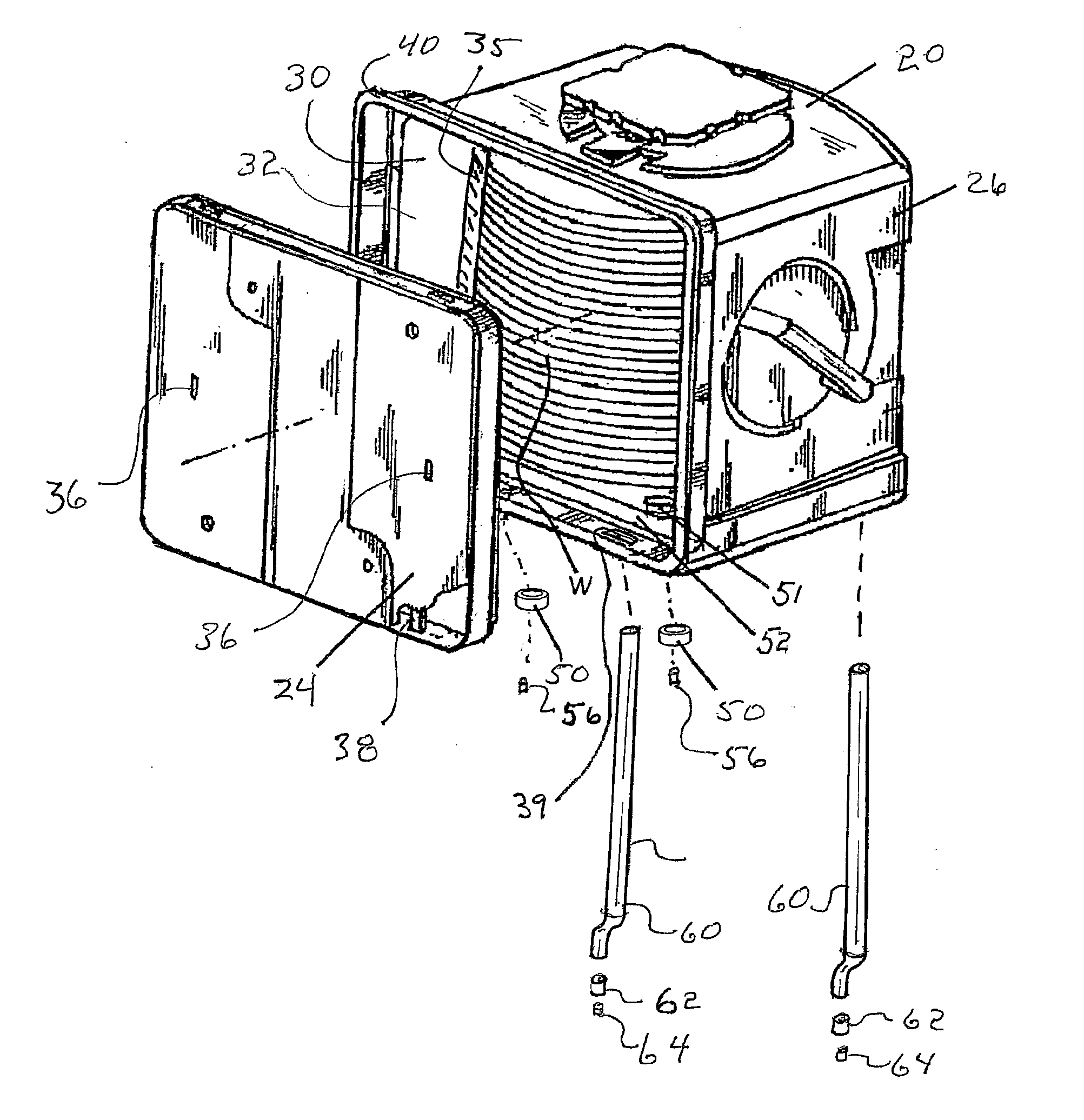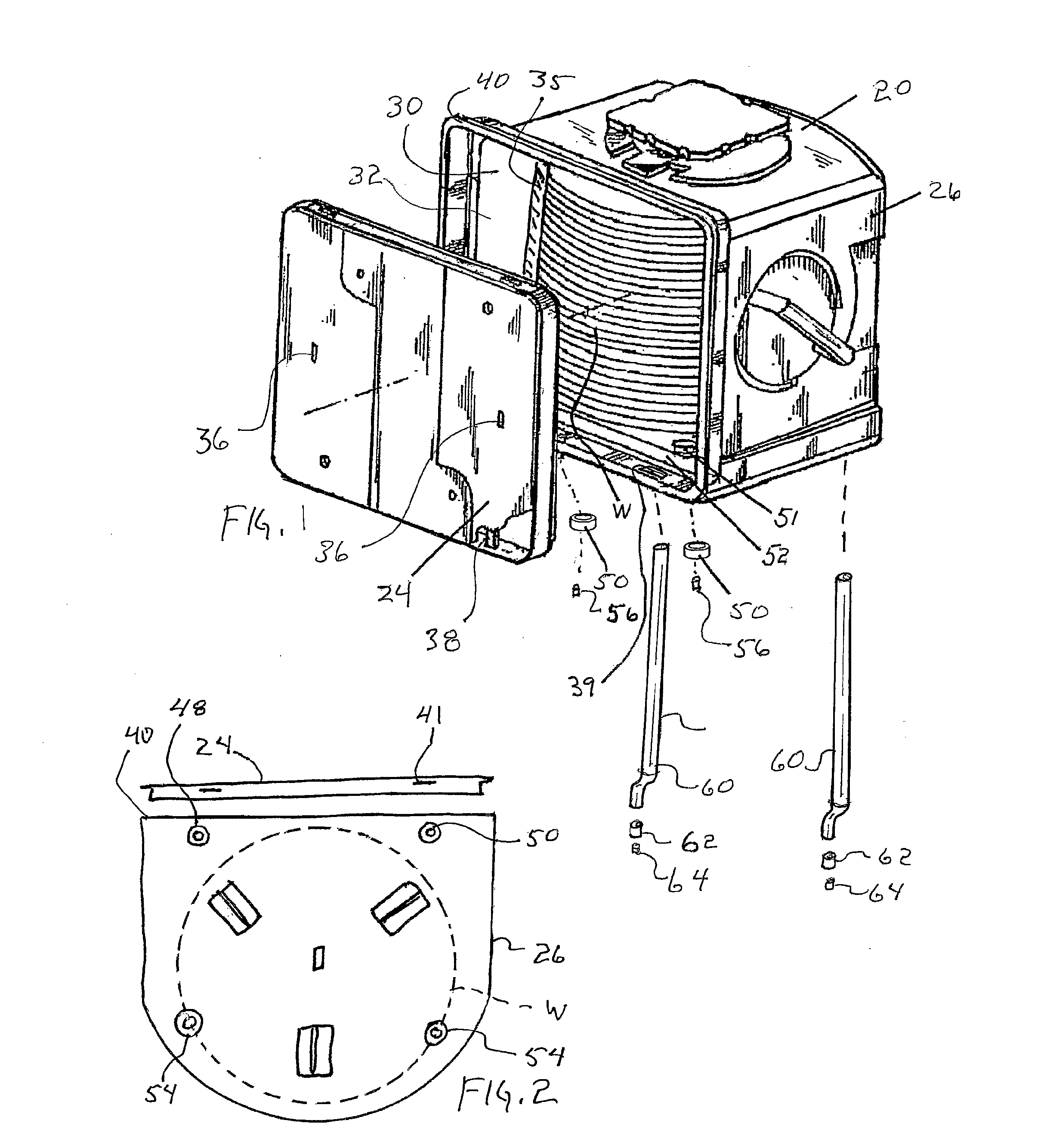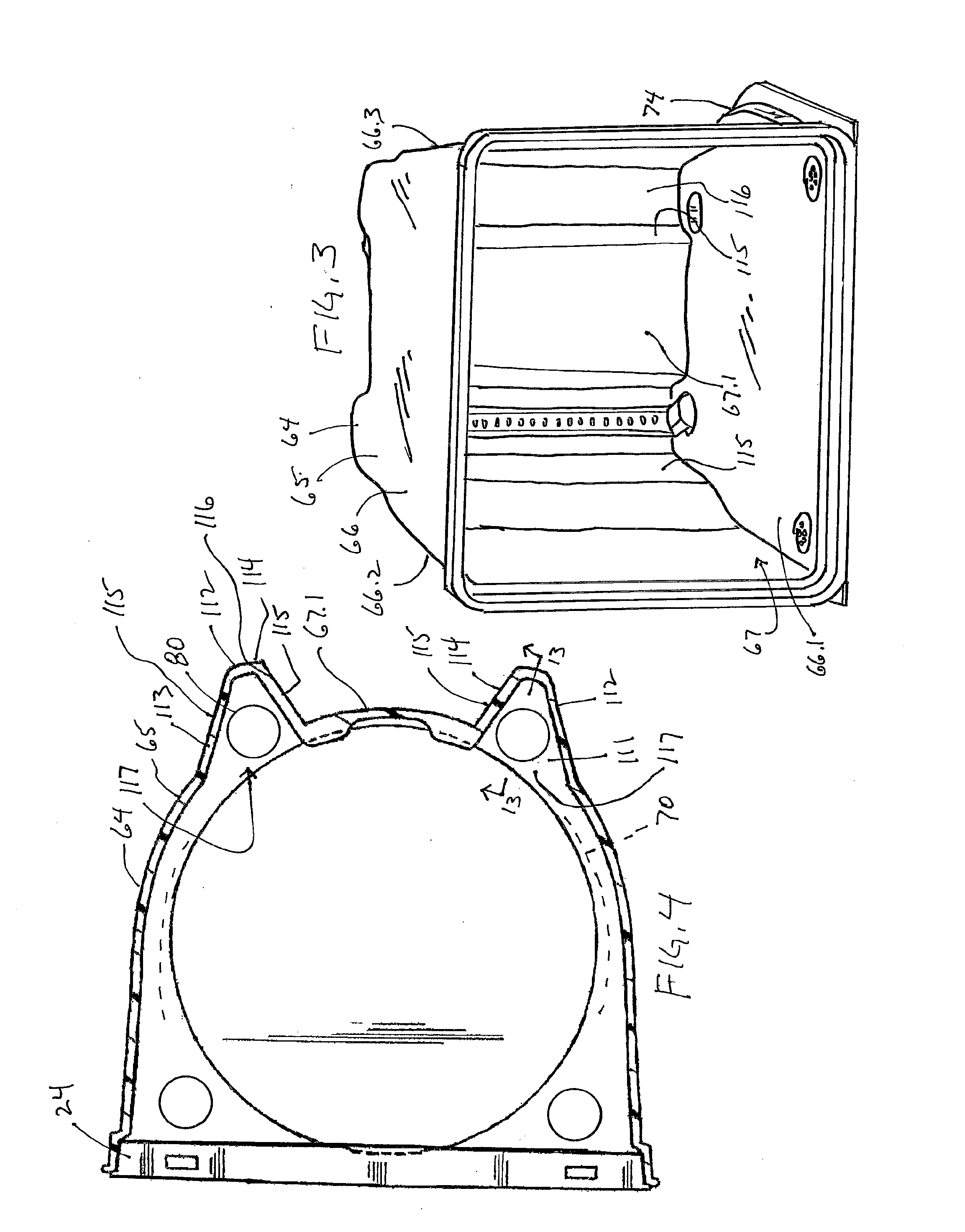Wafer container with tubular environmental control components
a technology of environmental control components and reticle pods, which is applied in the field of reticle pods and reticle containers, can solve the problems of insufficient optimal use of such structures, contamination of reticles in such containers, and high care and effort required for maintaining such clean rooms in a contaminant-free state, and achieves high coefficient of friction, easy retrofitting, and improved fluid flow characteristics
- Summary
- Abstract
- Description
- Claims
- Application Information
AI Technical Summary
Benefits of technology
Problems solved by technology
Method used
Image
Examples
Embodiment Construction
Referring to FIGS. 1 and 2, a front opening wafer container 20 is depicted and generally includes door 24 and container portion 26. Container portion 26 has front opening 30 leading into open interior 32 where a plurality of wafers W are retained on wafer shelves 35. Door 24 has key access holes 36 with latch mechanism 38 partially illustrated in the interior of the door enclosure with latch tips 41 that engage recesses 39 in the container portion door frame 40. The wafer container has purge capabilities with a pair of forward purge ports 48 with purge grommets 50 which are secured into grommet receiving structure 51 on the bottom 52 of the container portion and rearward purge ports 54. Check valves 56 may be inserted into the grommets to control the direction of purging gas fluid flow. Tubular environmental control components configured as purge towers 60 are illustrated which also may utilize grommets 62 and check valves 64. An exemplary location of purge ports is illustrated in F...
PUM
 Login to View More
Login to View More Abstract
Description
Claims
Application Information
 Login to View More
Login to View More - R&D
- Intellectual Property
- Life Sciences
- Materials
- Tech Scout
- Unparalleled Data Quality
- Higher Quality Content
- 60% Fewer Hallucinations
Browse by: Latest US Patents, China's latest patents, Technical Efficacy Thesaurus, Application Domain, Technology Topic, Popular Technical Reports.
© 2025 PatSnap. All rights reserved.Legal|Privacy policy|Modern Slavery Act Transparency Statement|Sitemap|About US| Contact US: help@patsnap.com



